
The wild roars and nature comes alive in Kenya! Kenya’s protected areas are home to different variety of flora and fauna species. Each wilderness area is specially branded because it has something unique to offer. From the ‘World’s only Wildlife Capital’ of Nairobi, ‘Bird Watchers Paradise’ of Lake Nakuru to the ‘Kilimanjaro’s Royal Court’ of Amboseli, Kenya’s wilderness areas are the face of the wild Africa. This is why Kenya is the home of the safari.
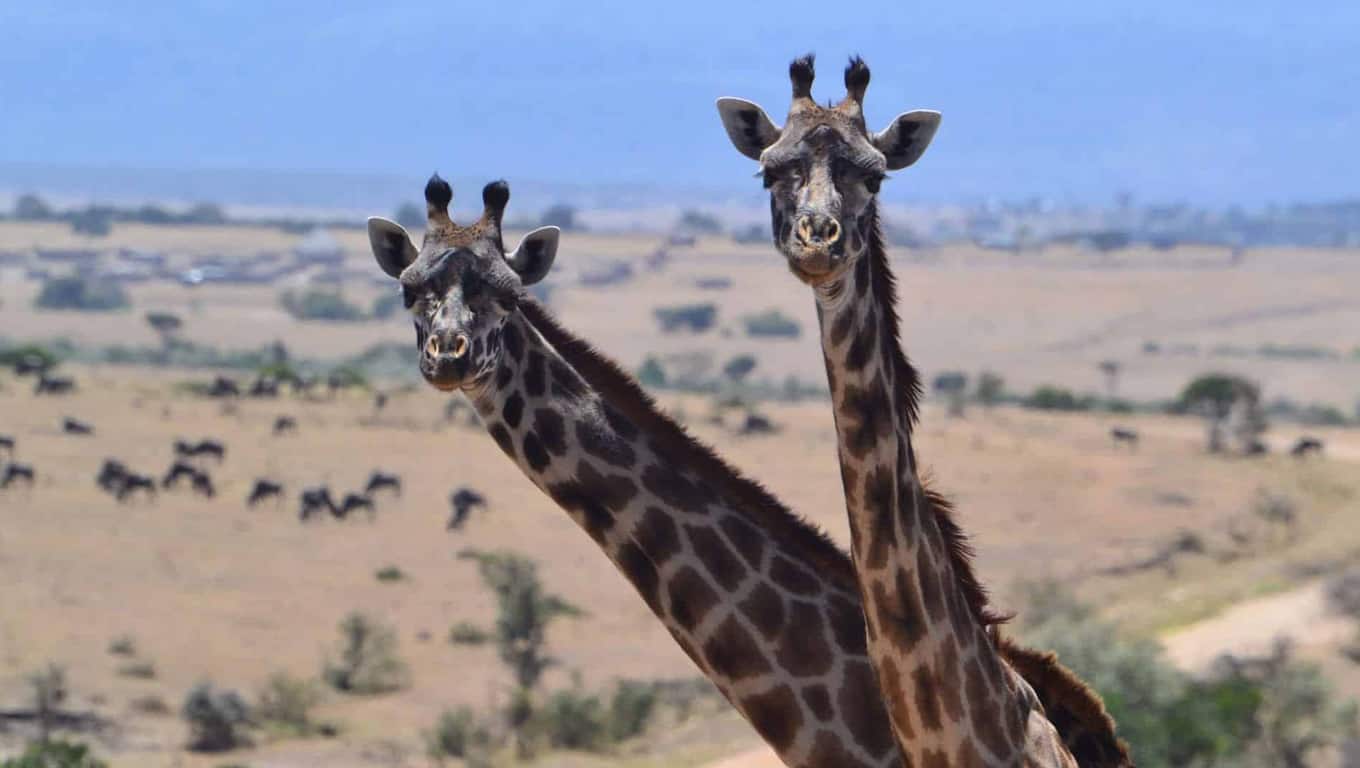
Masai Mara National Reserve is one of the most popular tourism destinations in Kenya, Africa. The reserve is located in the Great Rift Valley in primarily open grassland. Wildlife tends to be most concentrated on the reserve’s western escarpment.
The Masai Mara is regarded as the jewel of Kenya’s wildlife viewing areas. The annual wildebeest’s migration alone involves over 1.5 million animals arriving in July and departing in November.
There have been some 95 species of mammals, amphibians and reptiles and over 400 birds species recorded on the reserve.
Nowhere in Africa is wildlife more abundant, and it is for this reason a visitor hardly misses to see the big five (buffalo, elephant, leopard, lion, and rhino).
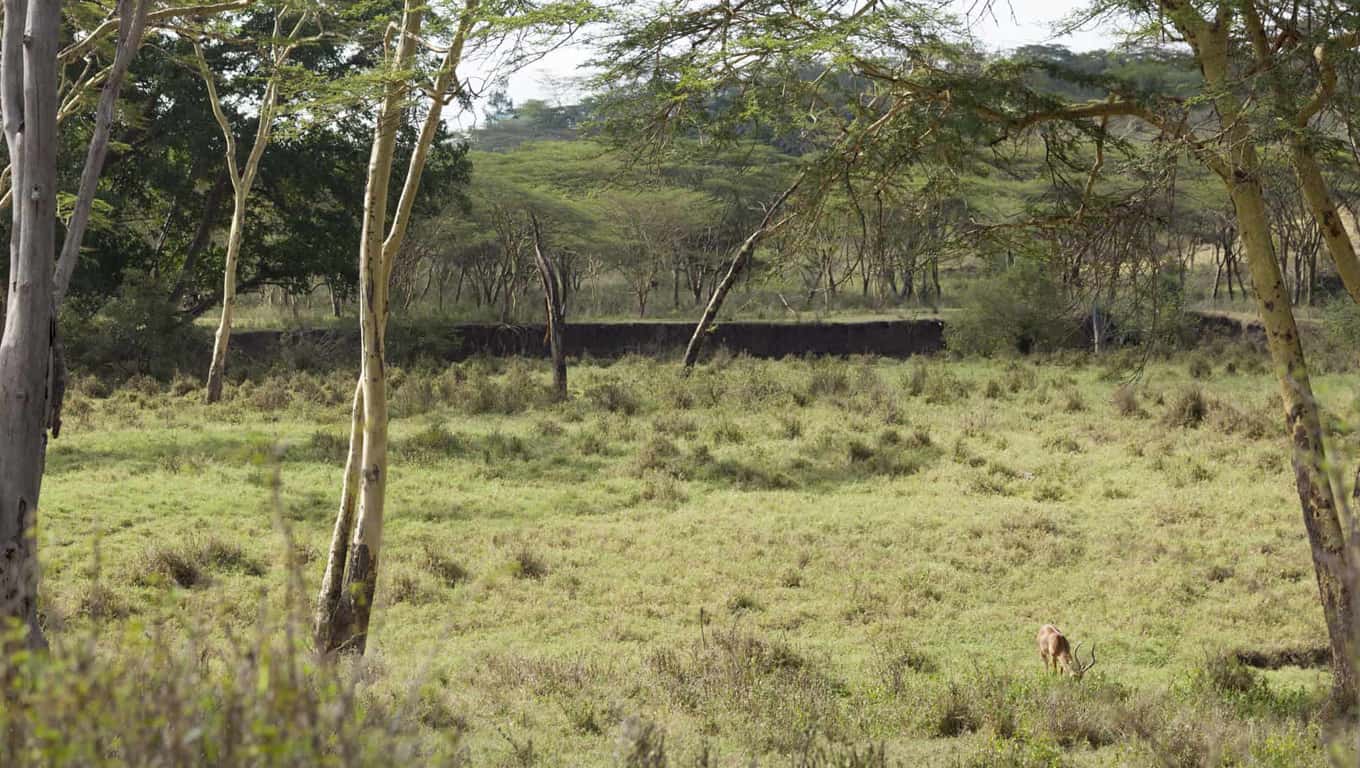
Nairobi National Park is unique by being the only protected area in the world with a variety of animals and birds close to a capital city. The park is a principal attraction for visitors to Nairobi.
Nairobi National Park is one of the most successful of Kenya’s rhino sanctuaries that is already generating a stock for reintroduction in the species former range and other upcoming sanctuaries.
Due to this success, it is one of the few parks where a visitor can be certain of seeing a black rhino in its natural habitat.
Nairobi Tented Camp is the first accommodation of any sort to be allowed in this unique safari destination. There is nowhere else in the world like it. Each of the 9 tents houses 2 people, and have their own flushing toilets and safari showers so you can enjoy en-suite living safari style. This is a wilderness escape where you can savor the thrill of camping in the heart of thick bush land right on the door step of the capital city.
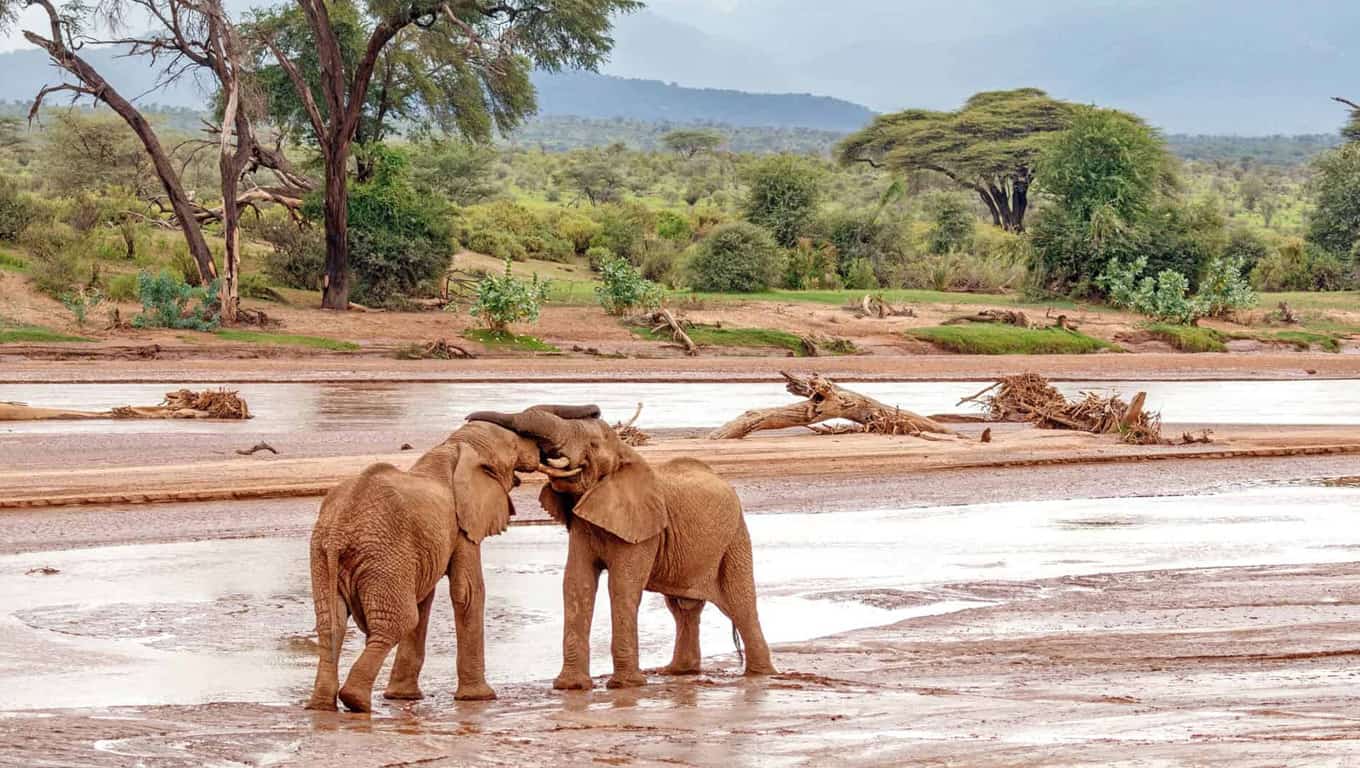
Samburu National Reserve is one of the lesser-known national parks, but is nevertheless teeming with life.
Situated alongside the Ewaso Nyiro River, there is plenty to attract wildlife from the surrounding Savannah plains.
The reserve is rich in wildlife with an abundance of rare northern specialist species such as the Grevy’s zebra, Somali ostrich, reticulated giraffe, gerenuk and the beisa oryx (also referred to as Samburu Special Five).
The reserve is also home to elephants and large predators such as the lion, leopard and cheetah. Kamunyak the miracle lioness that adopted the baby oryx was as a resident in the reserve.
Wild dog sightings are also a common attraction to this unique protected area. Birdlife is abundant with over 450 species recorded.
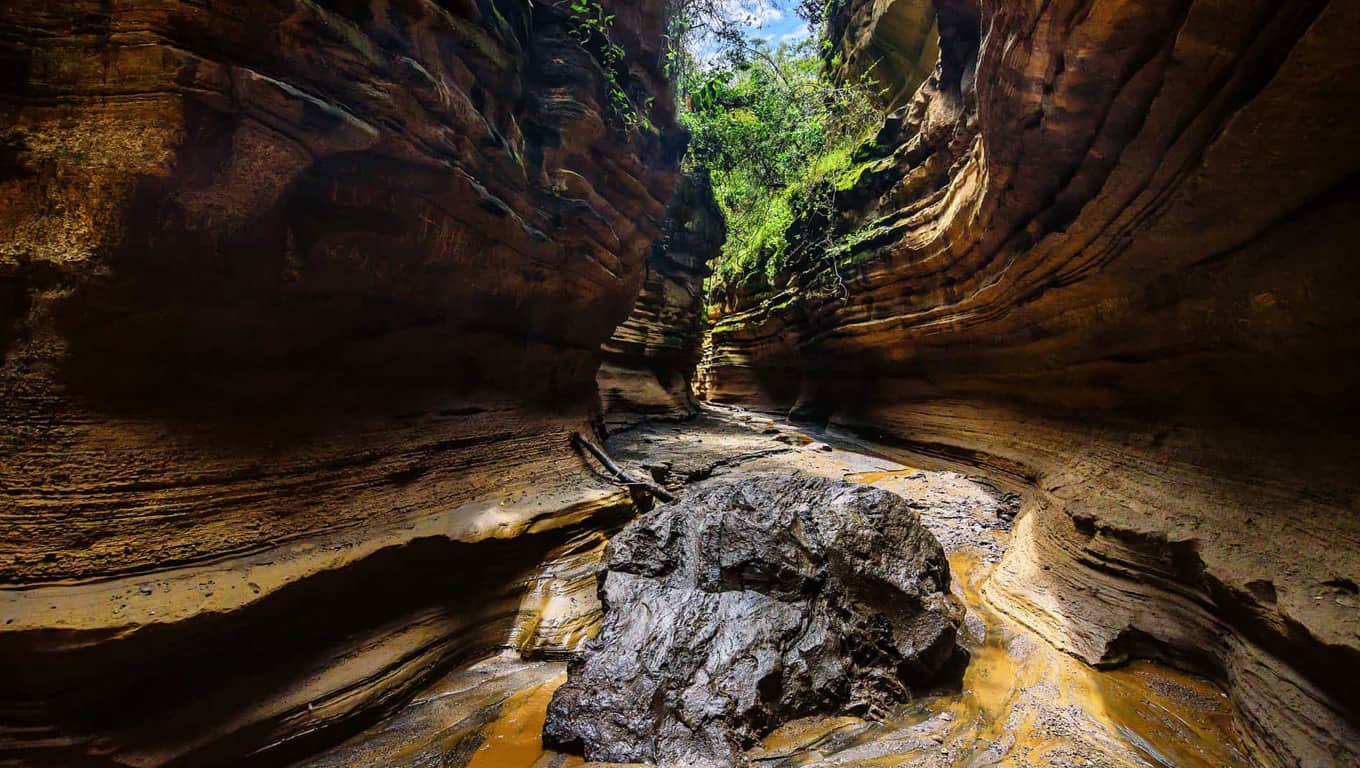
Hell’s Gate National Park covers an area of 68.25 square km and is situated in the environs of Lake Naivasha about 90 km from Nairobi. The park is 14 km after the turnoff from the old Nairobi-Naivasha highway.
It is characterized by diverse topography and geological scenery. It is an important home of the lammergeyer (The Bearded Vulture).
Hell’s Gate has two gates that are used by visitors – the main Elsa Gate and the Olkaria Gate. The latter also serves the Olkaria Geothermal Station that is located inside the National Park.
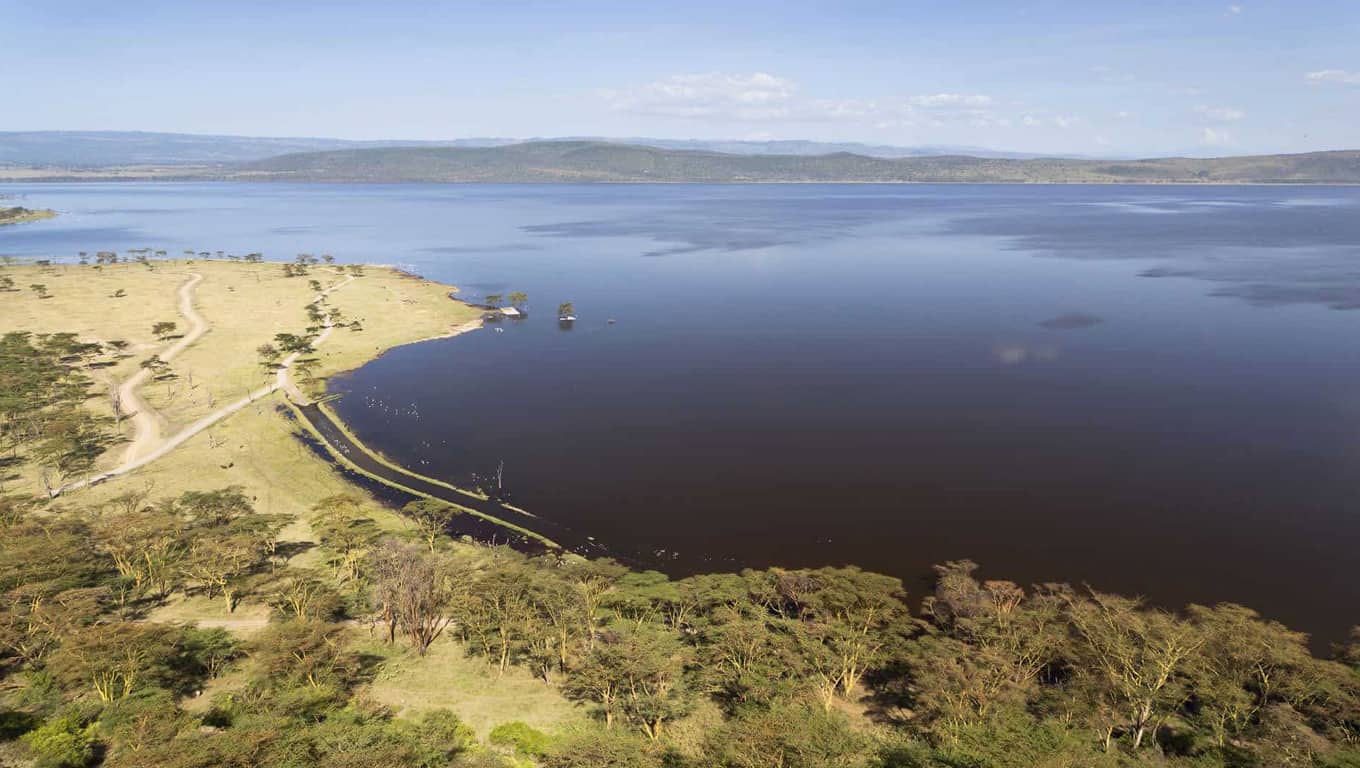
Lake Nakuru was first gazetted as a bird sanctuary in 1960 and upgraded to National Park status in 1968.
The Park has Kenya’s largest population of rhinos. The surface of the Lake Nakuru occupies about a third of the park. It supports a dense bloom of the blue-green Cyanophyte Spirulina platensis from which it derives its colour and is a food source for flamingos.
During peak season over millions of flamingos and pelicans congregate on the lake.
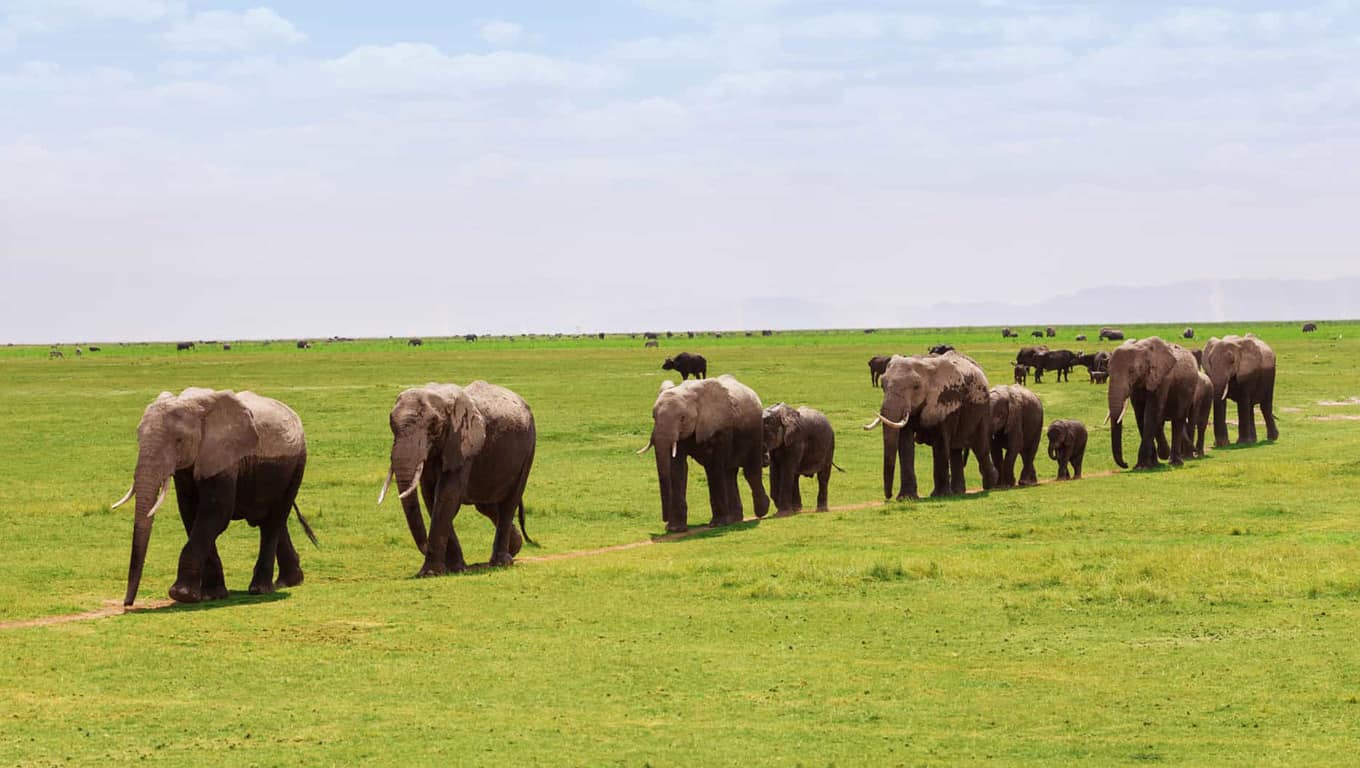
Amboseli lies immediately north-west of Mount Kilimanjaro, on the border with Tanzania. The Park covers 392 square km, and forms part of the much larger 3,000 square km Amboseli ecosystem.
Large concentrations of wildlife occur here in the dry season, making Amboseli a popular tourist destination. It is surrounded by six communally owned group ranches.
The National Park embodies five main wildlife habitats (open plains, acacia woodland, rocky thorn bush country, swamps and marshland) and covers part of a Pleistocene lake basin, now dry.
Amboseli is famous for its big game and its great scenic beauty – and the landscape is dominated by the towering Mount Kilimanjaro.
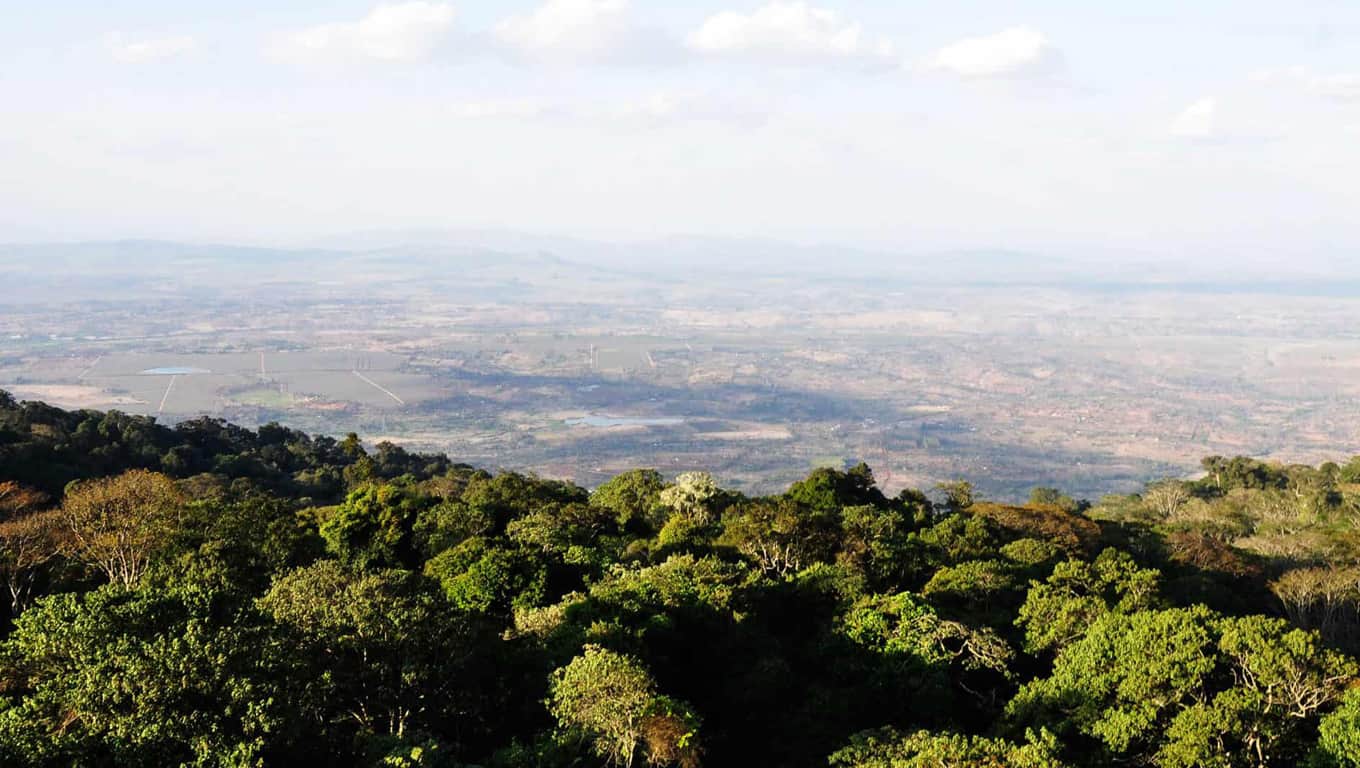
A rugged, hump-backed outcrop of ancient rock jutting high above the Athi Plains and hazily visible from Nairobi, Ol Donyo Sabuk is a densely forested mountain known to the local Kikuyu as ‘The Mountain of the Buffalo’, and to the Maasai as ‘The Big Mountain’.
Just one road leads to its summit, which offers magnificent 360’ panoramas over the Athi River, the pineapple fields of Thika and the snow-capped peaks of both Mount Kilimanjaro and Mount Kenya.
Within easy reach of Nairobi, the lush vegetation and cool air of this compact and scenic national park make for an ideal day trip or camping weekend.
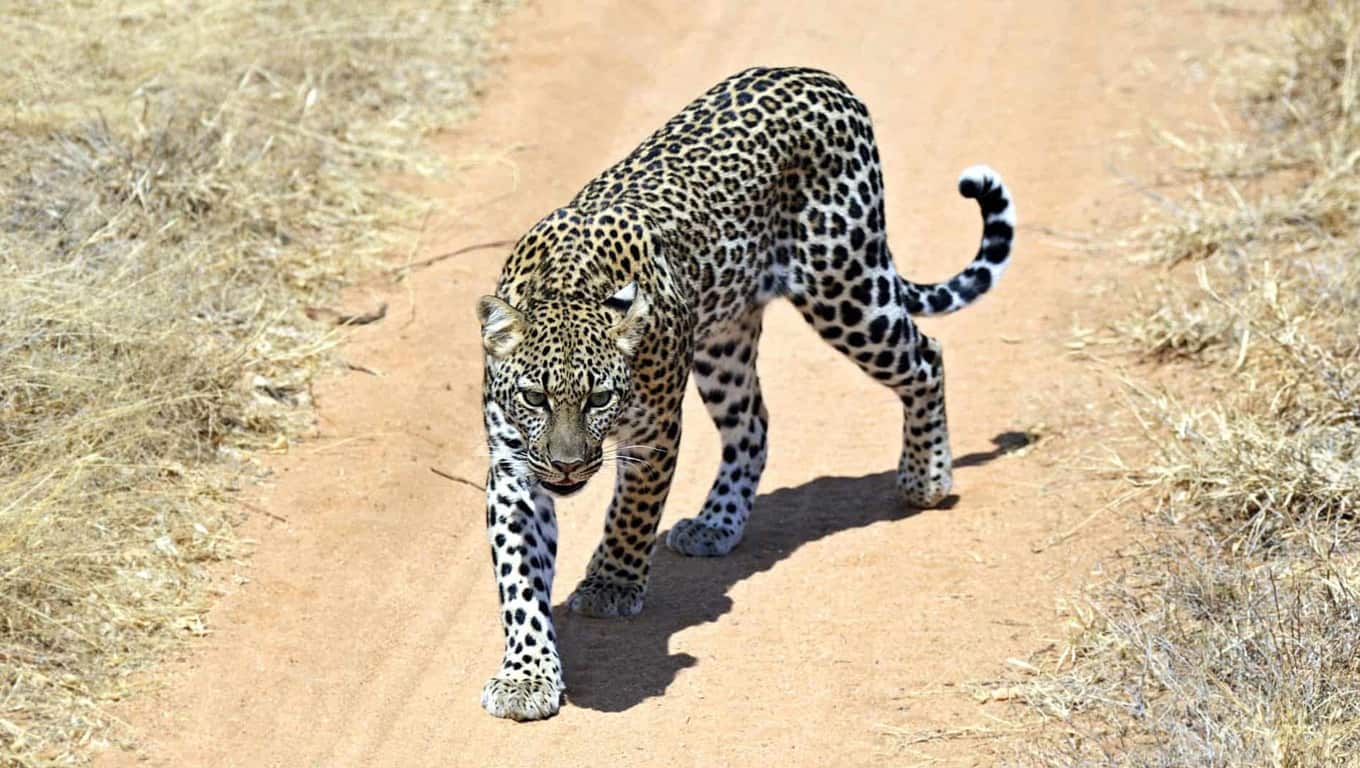
The Isiolo District lies at the northern foot of Mt. Kenya rising above the expansive range lands of northern Kenya.
The arid and semi-arid zones district sits as a divide between the populous agricultural highlands of the Mt. Kenya region and acts as a gateway into the vast lowlands of North Kenya inhabited by various nomadic pastoralist communities where wildlife and livestock freely co-exist.
Together with the adjacent Samburu, and divided by the river Ewaso Nyiro, the three reserves form a very popular tourist destination because of the diverse wildlife populations they support.
Unlike other wildlife areas in Kenya’s northern tourist circuit, the reserves, which are popularly known as the Samburu Ecosystem, sustain free ranging wildlife species both within the three reserves as well as far into community lands.
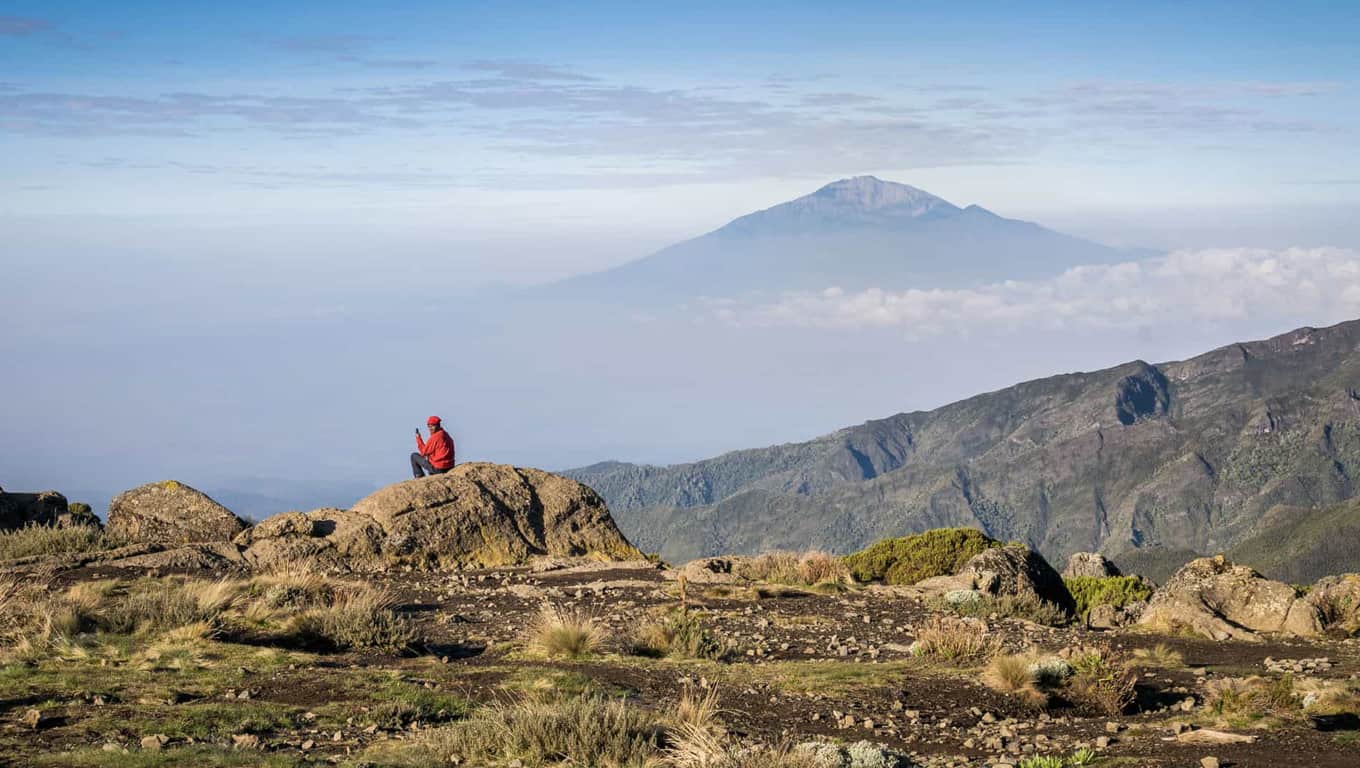
Meru National Park is wild and beautiful. Straddling the equator and bisected by 13 rivers and numerous mountain-fed streams, it is an especially beautiful area of Kenya. It has diverse scenery from woodlands at 3,400 ft (1,036 m) on the slopes of Nyambeni Mountain Range, north east of Mt. Kenya, to wide open plains with meandering riverbanks dotted with doum palms.
Game to view includes: lion, elephant, cheetah, leopard black rhino, zebra, gazelle, oryx and some of the rarer antelope, Lesser Kudu and duiker, also the more common Dik Dik, one of Africa’s smallest antelope. Large prides of lion can be seen and some of Kenya’s largest herds of buffalo. The rivers abound with hippo and crocodile, fishing for barbus and catfish is permitted at camp sites and along the Tana River. In the mid 1980’s, the Park suffered from poaching, however KWS armed wildlife security patrols have driven out the poachers and the elephant population has stabilized with breeding herds settling down.
Over 300 species of birds have been recorded, including: Red-necked falcon, Heuglins courser, brown-backed woodpecker, sunbirds Peter’s Finfoot, inhabiting the Murera and Ura Rivers; Pel’s Fishing Owl, kingfishers, rollers, bee-eaters, starlings and weavers.
The Park is most famous as the setting for Joy Adamson’s book “Born Free”, the story of the Adamson’s life and research amongst lion and cheetah. “Elsa” the lioness was the most well-known and her grave is marked here.